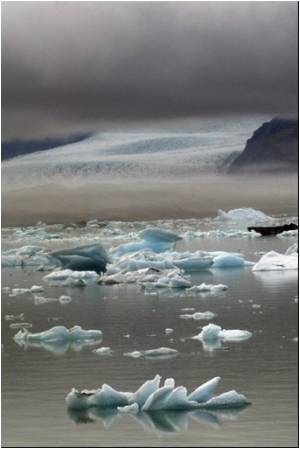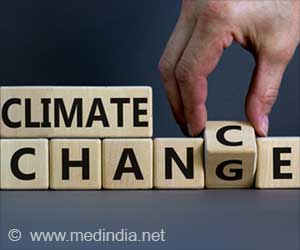The ruling Labour government in Australia has unveiled ambitious plans to combat pollution. It is proposing to slap a carbon tax of A$23 a tonne on its 500 worst polluters from 2012.

The government would spend A$9.2 billion over the first three years of the scheme to ensure heavy polluting industries like steel and aluminium production were not killed off, and help close the oldest and dirtiest power stations.
Assistance would come from free carbon permits covering 94.5 percent of costs for companies involved in the most emissions intensive and trade exposed sectors like aluminium smelters and steel manufacturers, while moderate emitting export industries would get 66 percent of permits for free.
Besides the government plans to invest $10 billion in renewable energy, supports energy efficiency and starts planning for a 100 per cent renewable energy future, apart from proposing tax cuts for voters fearing higher energy bills.
Agriculture will be exempt, but the government wants farmers and foresters to cash in on carbon offsets through its carbon farming initiative, which will allow offsets through forestry, changes to land clearing, savannah burning and animal management.
"Australians want to do the right thing by the environment…we will cut 159 million tons a year of carbon pollution from our atmosphere by 2020,” Gillard said in a statement. “That is the equivalent of taking over 45 million cars off the road.”
Advertisement
"That is why the Gillard government is implementing a comprehensive plan for a clean energy future for our nation. It's time to get on with this, we are going to get this done," she told reporters.
Advertisement
But Treasurer Wayne Swan said all taxpayers earning below A$80,000 a year would get tax cuts worth around A$300 a year, which analysts said could actually help boost the struggling retail sector, where spending has been sluggish.
As well as exempting fuel from the scheme for all motorists except for heavy transport, the tax-free threshold would also be tripled to A$19,400 by July 2015 when emissions trade began.
"No Australian will pay more tax as a result of these changes," Gillard said.
Though at the end of the day, it all will have only a modest impact on carbon emissions, just 5 per cent lower than 2000 levels by 2020, still it is welcome, commentators said.
“The most important change is that it does start to set Australia on a path to find more energy-efficient ways to do business. It sets up the machinery for repricing carbon intensity according to progress in the rest of the world,” Peter Harther, political editor of Sydney Morning Herald said.
"This is the moment where Australia turns its back on the fossil fuel age, and turns its face towards the greatest challenge of the 21st century, and that is addressing global warming," said Australian Greens deputy leader Christine Milne, whose party wields the balance of power in the upper house.
The stakes are high for ruling Labor, which has just a one-seat lower house majority, but the package already has the support of the Greens and key independents, giving her the numbers she needs to pass it through parliament. Two previous attempts in 2009 were defeated.
But the danger is that a vigorous campaign by the conservative opposition and business groups opposed to the tax, could erode public support below already shaky levels and frighten political backers ahead of elections due by 2013.
A survey last fortnight showed the PM’s popularity plummeting to record low last fortnight, but she remains unfazed, saying she is determined to make the country and the planet at large more livable than it is now.
Opposition leader Tony Abbott slammed the move, calling it “socialism masquerading as environmentalism,” and also claimed that the package would leave millions of Australians worse off without significant environmental gains.
The deal paves the way for the largest emissions-trading scheme outside Europe. The cost of A$23 is more than the average price of allowances over the last two months in Europe, which started the world’s biggest emissions-trading program in 2005.
The cost of A$23 is more than the average price of allowances over the last two months in Europe, which started the world’s biggest emissions-trading program in 2005.
Europe's system, which covers the 27 EU member states plus Norway, Iceland and Liechtenstein, has forced power producers to pay for carbon emissions, driving cuts where power plants were forced to switch to less carbon-emitting natural gas or biomass. Outside the EU, only New Zealand has a national scheme in operation.
The Australian move could help break the logjam on the global warming front. US President Barack Obama has ruled out a federal climate bill this term. Also the Cancun treaty of last year was more of a window-dressing.
The "Climate Action Tracker," an independent science-based assessment, jibes, “Emissions are at historic high while action is not." While the developed countries show little additional action and fragmented accounting rules, the developing countries show significant planning activities.
"Current emission reduction pledges, after the close of the Cancun climate conference, fall short of what is needed to get the world on track for limiting global warming to 2 and 1.5°C above pre-industrial levels. Both of these warming limits are mentioned in the agreement. To keep warming limited to these targets, global total emissions need to drop below 44 billion tonnes CO2eq per year by 2020. After adding up reduction proposals of individual countries and taking into account accounting provisions, expected global emissions leave a gap of 12 billion tonnes CO2eq/yr by 2020," the website says.
In the circumstances the Australian moves are heartening to some extent, say environmentalists.
In the circumstances the Australian moves are heartening to some extent, say environmentalists.
Source-Medindia







